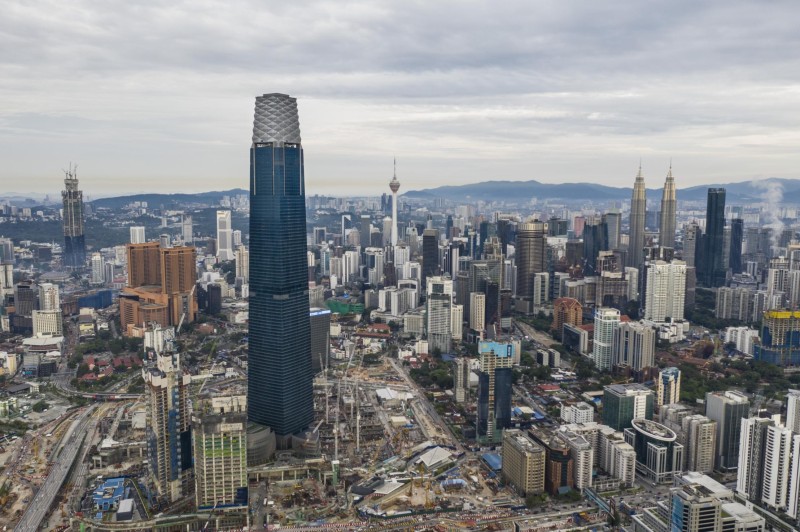
Image credit: Dot Property
PETALING JAYA: The economic complexities in Malaysia are multi dimensional as far as strengths and weaknesses go.
Toulouse School of Economics Centre of Collective Learning director, Prof Cesar A. Hidalgo said one of the four pillars to ascertain at what level of complexity Malaysia stands is trade.
According to him, Malaysia has done relatively well in this area as it appears to be a manufacturing economy that is typically involved in value chains that produce high-complexity products.
He said the electrical and electronics sector is a good example as it is a growing market and the country has made itself a name among big players globally.
“However, the other three pillars are where Malaysia isn’t doing very well. Technology is ranked 38th, research and development (R&D) is ranked in its 80s and in digital products, unfortunately Malaysia is not a big exporter of digital products,” he said.
Hidalgo was speaking to reporters at the Permodalan Nasional Bhd’s (PNB) Knowledge Forum 2024 on Economic Complexity: Navigating the Thread of Economic Relatedness here yesterday.
He added that in digital product measuring, it does not include cryptocurrency, which could be a sector where Malaysia has comparative advantage.
Regardless, among the four pillars, it was clear that the knowledge base element was missing, which is important because it is needed to generate products that are being used and exported.
On why this lack in R&D, Malaysian Inclusive Development and Advancement Institute of Universiti Kebangsaan Malaysia director, Prof Tan Sri Noor Azlan Ghazali, said it might involve historical reasons but over the years, it has been noticeable that 80% to 90% of research is only done at university levels.
“We are not seeing in-depth research being done by corporate players and industries, so this is a challenge for the country. We have strength in assembling parts but in terms of research on products, techniques and methods, we are very limited,” he said.
Noor Azlan said as an adviser to the Higher Education Minister, he has been advocating for research that creates impact.
“A few weeks ago, the Malaysian Investment Development Authority organised a collaboration between universities and multinational corporations for this purpose, showing us that we need capabilities in the research area,” he said.
For the digital trade aspect, Hidalgo explained that it was hard to capture, as none of it actually crosses any custom barriers, rather much of it may be masked through the construction of subsidiaries.
“For example, Google could have an office here in Malaysia, which operates a small marketing team that sells Google advertising services and makes some revenue. But in reality, the revenue that Google is making in Malaysia is being controlled by people in the United States,” he said.
He said the same goes for when someone in Malaysia buys a subscription for a streaming service like Netflix or Amazon.
Noor Azlan agreed, saying that as global trade and the business landscape progresses, the government and its agencies must be able to cope with the changes.
“We see a lot of products coming from abroad without being entered into the data that we capture.
“And sometimes the data that we do capture, say for instance exports – within that are products that the country imports. This means we could be value-adding a little bit,” he said.
He said this is why the “assembled in Malaysia”, rather than “made in Malaysia” term has been coined.
“Nowadays with the global supply chain, it’s mushrooming and moving very fast. We really need to nail it down, to ensure that we are the ones manufacturing a particular good or item,” he said.
Additionally, Noor Azlan said economic activities need to be matched to talents, but the retaining of good talents has been a concern.
“We in Malaysia have a problem of rewarding talents. Many studies have shown that if you compare two people with the same levels of productivity and skills, the one in Malaysia is being rewarded less,” he said.
He opined, as a solution, skilled migrants could strengthen the complexity in the country.
“Having more learned persons is better than having fewer. What we see in India and China, for example, they flooded the United States. But many are returning now and are the brains behind many companies,” he said.
Hidalgo said one of the main goals should be to promote Malaysia as a place that one can come and thrive.
“It’s always going to be about producing, attracting and retaining. If not, it will become a challenge. There is a lot more than we can embrace that will give us a better chance at moving forward quicker,” he said.
Meanwhile, PNB group chairman Raja Tan Sri Arshad Raja Tun Uda said the New Industrial Master Plan 2030 (NIMP 2030) aligns well with PNB’s three-year strategy, LEAP 6, which is dedicated to its unitholders and the broader economic well-being of Malaysia.
He added that PNB will facilitate the NIMP 2030’s implementation through private-public partnerships to position Malaysia as a high-income economy with a greater degree of economic complexity.
“PNB plays a crucial role in contributing a significant portion to Malaysia’s gross domestic product and workforce through its investee companies, actively, in driving the economy and creating opportunities for sustainable development in the country,” he said.
Source: https://www.thestar.com.my/business/business-news/2024/07/05/the-three-pillars-that-malaysia-needs-to-improve

